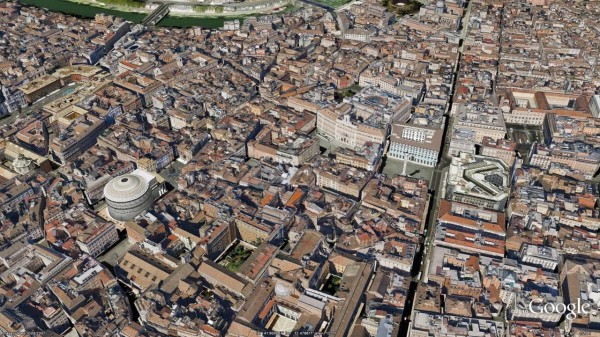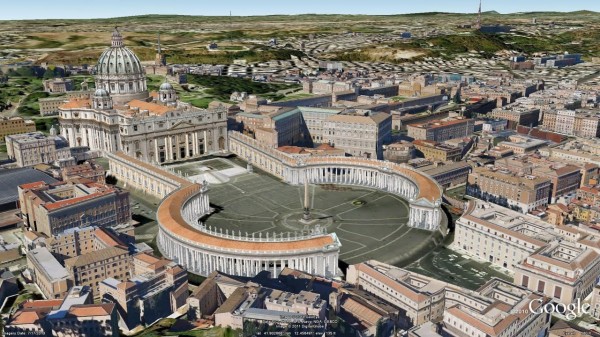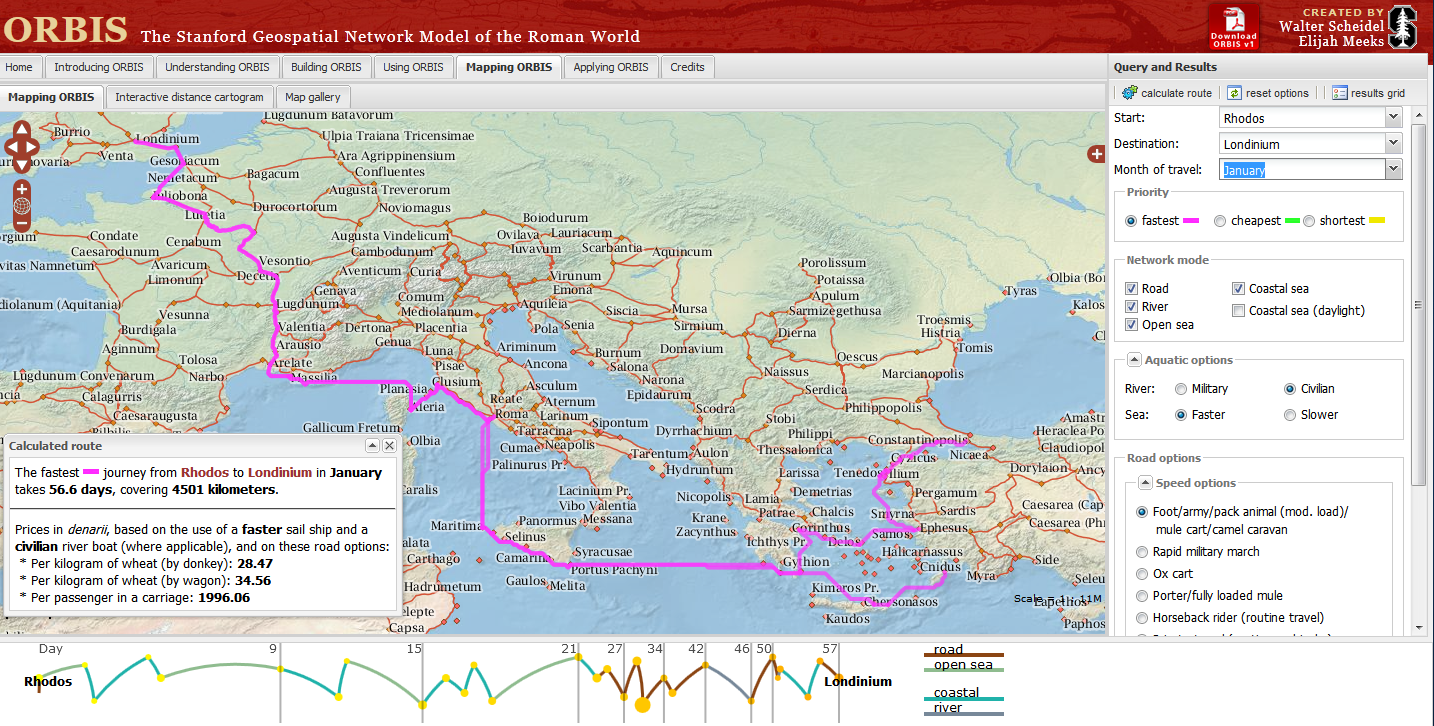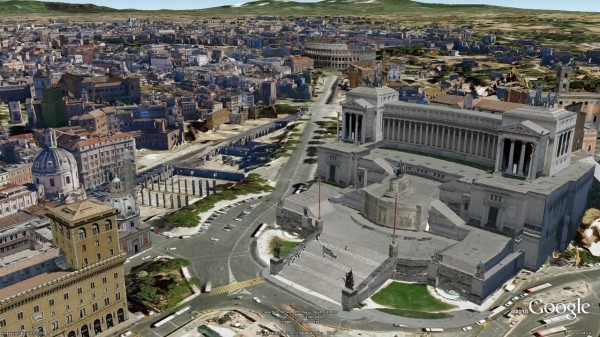Rome really is an eternal city. With a history spanning over 2500 years and regimes from the early kingdom, through the republic, the empire, and later as the heart of the Catholic faith in the Vatican city, each has made their mark on the current urban architectural landscape of Rome. Now, with the release of thousands of new 3D buildings for the city, you can
explore the blending of the ages in layered construction of Rome from within
Google Earth. Let’s start our exploration in the ruins of the ancient Roman forum, home of the original Roman republic. From here we can easily travel to some of the subsequent Imperial buildings such as the Colosseum (AKA the Flavian Amphitheater) and Trajan’s Market and Column.
Looking towards the Colosseum through the Roman Forum
Next, we’ll head Northwest, towards the Pantheon and Piazza Navona. The Pantheon is a great example of the layered reuse of buildings in Rome; originally built in the Republican period, the Pantheon was retrofitted with the front portico in the Imperial period, and then later converted into a church. The shape of Piazza Navona also displays its historic foundation as the site was originally the Stadium of Domitian in the Imperial era.

Central Rome showing the Pantheon and Piazza Navona
Lastly, let’s head over to the Vatican City, where we can see great examples of the Renaissance and Baroque architecture of the city in Saint Peter’s Basilica and the colonnade by Bernini around St. Peter’s square.

St. Peter’s Basilica and Piazza in Vatican City
There is much more to explore in Italy’s modern capital, so have a look around this beautiful city!



